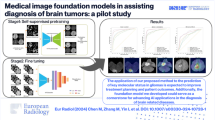Abstract
The aim of this exploration is to analyze the elements related to infections as well as neurological damage complications after transcatheter arterial chemoembolization (TACE) by computer information health analysis using deep learning. In this exploration, there were 80 primary liver cancer patients who were selected as the study subjects. After each patient was treated with TACE, analysis is made on their postoperative complication incidence as well as the complication differences among different groups. Moreover, comparison is carried out among the levels of alpha-fetoprotein, grades of liver function, iodized oil dosage, arteriovenous fistula, tumor blood supply, as well as tumor morphology in operation. The patient's information was input into the deep learning system to analyze the patient's disease status. There were statistical differences at P < 0.05. The research results suggested that ectopic embolization of iodized oil, myelosuppression, liver function impairment, gastrointestinal symptoms, fever, as well as infection could lead to neurological damage. The incidence that they caused was 1.25%, 22.5%, 77.5%, 86.25%, 90%, and 58.75%, respectively. There was no obvious relationship between alpha-fetoprotein and the postoperative complications mentioned above; moreover, tumor morphology as well as tumor blood supply could affect the postoperative infection, fever, gastrointestinal symptoms, as well as liver function damages obviously. In addition, the classification of liver function could greatly influence the symptoms of postoperative gastrointestinal, myelosuppression, as well as damages of liver function. Therefore, the analysis of TACE postoperative neurological damage complications as well as correlated factors revealed that it was necessary to take appropriate nursing treatment measures, which can not only enhance the TACE surgery’s success rate, but also prolong the survival of patients.







Similar content being viewed by others
References
Cai M, Sun X, Wang W et al (2018) Disruption of peroxisome function leads to metabolic stress, mTOR inhibition, and lethality in liver cancer cells. Cancer Lett 225(4):322–330
Hsu CY, Liu PH, Ho SY et al (2018) Using nomogram of the Barcelona clinic liver cancer system for treatment selection in patients with stage C hepatocellular carcinoma. BMC Cancer 18(1):289
Tamura T, Wada K, Konishi K et al (2018) Coffee, green tea, and caffeine intake and liver cancer risk: a prospective cohort study. Nutr Cancer 70(8):1–7
Al-Janabi S, Alkaim AF (2019) A nifty collaborative analysis to predicting a novel tool (DRFLLS) for missing values estimation. Soft Comput 24(1):555–569
Yang K, Wang XW, Zhao L et al (2017) Effect of radiofrequency ablation combined with transcatheter arterial chemoembolization on inflammatory factors, oxidative stress response factors and tumor activity factors in patients with primary liver cancer. Cancer Med 23(4):112–116
He MK, Li Q, Shen JX et al (2019) Predictive factors for the benefit of triple-drug transarterial chemoembolization for patients with unresectable hepatocellular carcinoma. Cancer Med 8(9):4200–4213
Monier A, Duran R, Bize P et al (2016) Liver and biliary damages following transarterial chemoembolization of hepatocellular carcinoma: comparison between drug-eluting beads and lipiodol emulsion. Eur Radiol 27(4):1–9
Cigdem S, Mustafa FA, Ozlem NK et al (2016) Comparison of survival, safety, and efficacy after transarterial chemoembolization and radioembolization of Barcelona clinic liver cancer stage B-C hepatocellular cancer patients. Nucl Med Commun 37(6):1
Xiao HC, Wen LL, Zhong HL et al (2017) Epidemiology and management of acute kidney injury in hepatocellular carcinoma patients undergoing transcatheter arterial chemoembolization. Curr Protein Pept Sci 18(12):1218–1223
Chaudhary K, Poirion OB, Lu L et al (2017) Deep Learning based multi-omics integration robustly predicts survival in liver cancer. Clin Cancer Res 24(6):0853
Das A, Acharya UR, Panda SS et al (2019) Deep learning based liver cancer detection using watershed transform and Gaussian mixture model techniques. Cogn Syst Res 54(5):165–175
Peng SY, Huang CY, Wang XA (2017) Clinical effect of terminal branches portal vein embolization combined with transcatheter arterial chemoembolization on liver neoplasms. Chin J Surg 55(9):655–660
Kitano M, Davidson GW, Shirley LA et al (2016) Transarterial chemoembolization for metastatic neuroendocrine tumors with massive hepatic tumor burden: is the benefit worth the risk. Ann Surg Oncol 23(12):4008–4015
Al-Janabi S, Patel A, Fatlawi H, et al (2014) Empirical rapid and accurate prediction model for data mining tasks in cloud computing environments. Int Congr Technol, IEEE. https://doi.org/10.1109/ICTCK.2014.7033495
Nomura Y, Sato I, Hanawa T, et al (2020) Development of training environment for deep learning with medical images on supercomputer system based on asynchronous parallel Bayesian optimization. J Supercomput 76(2):1–18
Jifara W, Jiang F, Rho S et al (2019) Medical image denoising using convolutional neural network: a residual learning approach. J Supercomput 75(2):704–718
Balalavi M, Huang HC, Tsai TF, et al (2020) Applying Taiwanese indigenous health literacy for designing an elders’ prevention fall course: a statistical analysis and deep learning approach. J Supercomput 77(6):1–28
Hosseinzadeh M, Ahmed OH, Ghafour MY, et al (2020) A multiple multilayer perceptron neural network with an adaptive learning algorithm for thyroid disease diagnosis in the internet of medical things. J Supercomput 2020(8):1–22
Yin S, Ouyang P, Yang J et al (2018) An energy-efficient reconfigurable processor for binary-and ternary-weight neural networks with flexible data bit width. IEEE J Solid-State Circuits 54(4):1120–1136
Al-Janabi S, Mahdi MA (2019) Evaluation prediction techniques to achievement an optimal biomedical analysis. Int J Grid Util Comput 10(5):512–527
Lobo L, Yakoub D, Picado O et al (2016) Erratum to unresectable hepatocellular carcinoma radioembolization versus chemoembolization: a systematic review and meta-analysis. Cardio Vasc Interv Radiol 39(11):1580–1588
Bruneton JN, Treut AL, Abbes M et al (2017) Hepatic oil embolization following lymphangiography. A report of 12 cases. Lymphology 15(2):70–73
Author information
Authors and Affiliations
Corresponding author
Additional information
Publisher's Note
Springer Nature remains neutral with regard to jurisdictional claims in published maps and institutional affiliations.
Rights and permissions
About this article
Cite this article
Xing, M., Ma, Z., Fu, H. et al. Analysis of complications after transcatheter arterial chemoembolization based on deep learning. J Supercomput 77, 10441–10462 (2021). https://doi.org/10.1007/s11227-021-03687-7
Accepted:
Published:
Issue Date:
DOI: https://doi.org/10.1007/s11227-021-03687-7




